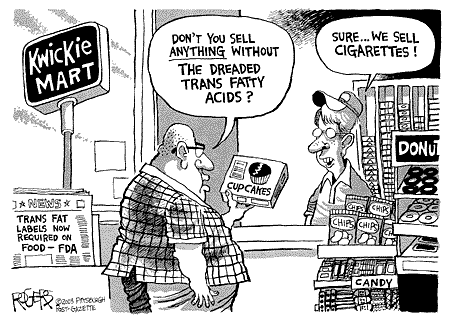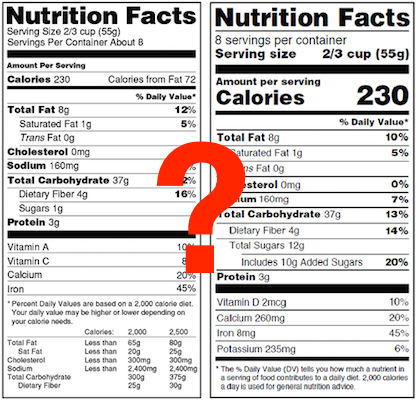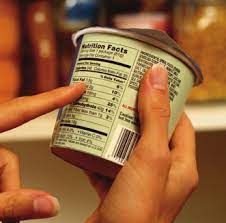The Misunderstanding of Trans Fats
We recently went through a major update of the ingredient database we use for our nutrition analysis and labeling software. We'll go over that in more detail in another post, but during that process we realized that there's a bit of a misunderstanding of what trans fats are in the food and web community.
In our research to more accurately represent trans fats in the USDA database, we found a few good resources.

Trans fats consumed in high levels can be outright killers.
The High Level Overview
Below are some of the key points to understand about trans fats:
- Trans fat is an unsaturated fat.
- Trans fat is naturally occurring in meat and dairy, but in low levels (2-5% of total fat).
- Trans fat can be created synthetically by partially hydrogenating oils. This is what everyone is trying to ban.
- Naturally occurring and synthetic trans fats are identical, but synthetic trans fats can contain A LOT more trans fats.
The Misunderstanding
In more than one place we saw people (including doctors) claiming that you can figure out how much trans fat is in a product by taking total fat and substracting saturated fat and unsaturated fat. That's plainly incorrect, specifically because trans fat is part of the unsaturated fats.
Separately, we saw over and over that consumers should avoid saturated and trans fats, and eat more unsaturated fats, since those are healthier. Generally, that's true. But, trans fat is an unsaturated fat. So, if a food is mostly unsaturated "healthy" fats, but those unsaturated fats are really trans fats, you're making a big mistake thinking that it's healthy.
Final Thoughts
Plenty of healthy foods will contain some trans fat - milk, beef, and butter to name a few. In moderation, these are important parts of your diet.
What you definitely want to avoid is synthetic trans fat, which can quickly add up if you don't pay attention. Any ingredient that is "partially hydrogenated", you should stay away from. Fried foods are often fried in these oils, as are many baked goods, shortenings, and margarine.
The other thing you want to beware of is that even if a food has trans fat in it, the nutrition label might show it as zero. That's because if it has less than 0.5 grams, it gets rounded down to zero. Be aware of the ingredients in the food and know which ones might have trans fat, particularly synthetic trans fats.
Other thoughts, comments, points we missed? Add them in the comments below or chat us on the bottom right.






